Sustainable Solutions: Analyzing Clean Energy
- PM
- July 19, 2024
- Edited 8 months ago
Table of Contents
In a world grappling with climate change and a growing need for renewable resources, the move toward sustainable energy technologies is not just a priority but a necessity. Understanding and assessing various sustainable energy technologies becomes crucial as we strive to reduce our carbon footprint.
This blog post aims to provide a clear, detailed guide to evaluating sustainable energy solutions, ensuring that individuals, businesses, and policymakers can make informed decisions based on reliable assessments. With environmental well-being at stake, let’s dive into the world of sustainable energy technologies and assessments.
Understanding Sustainable Energy Technologies
Before we can assess the effectiveness of sustainable energy technologies, it’s important to understand what these technologies entail. Sustainable energy technologies are systems and processes designed to provide energy in a way that meets current demands without compromising the ability of future generations to meet their needs.
These include solar power, wind energy, hydroelectricity, biomass, and geothermal energy. Each technology harnesses natural processes to generate energy in an environmentally friendly manner, reducing reliance on fossil fuels and lowering greenhouse gas emissions.
The Role of Assessments in Sustainable Energy Technologies
Assessments play a pivotal role in adopting and improving sustainable energy technologies. They help quantify how effective a technology is at reducing environmental impact, what it costs, and its potential return on investment.
Such evaluations are essential for directing investments, shaping policies, and guiding the development of new technologies. For every sustainable energy technology, assessments must address several key areas: efficiency, cost-effectiveness, environmental impact, and scalability.
Criteria for Evaluating Sustainable Energy Technologies
When assessing sustainable energy technologies, certain criteria must be met to ensure the technology is viable and effective. These criteria include:
- Efficiency: How well does the technology convert natural resources into usable energy? Higher efficiency means less waste and better performance.
- Cost-effectiveness: Is the technology affordable in the long run? This includes initial installation costs, maintenance, and operational costs.
- Environmental impact: What are the environmental benefits or drawbacks? Assessing the lifecycle of the technology helps understand its total environmental footprint.
- Scalability: Can the technology be scaled up to meet large-scale demand? This is crucial for widespread adoption.
Challenges in Assessing Sustainable Energy Technologies
Despite the clear benefits, assessing sustainable energy technologies comes with its challenges. One major hurdle is the variability of natural resources—solar and wind energies depend heavily on weather conditions and geographic locations.
Additionally, the high initial costs of some technologies can be a barrier to entry despite long-term savings and environmental benefits. Moreover, the lack of standardized methods for assessment can lead to inconsistent data, complicating comparisons between technologies.
Future Trends in Sustainable Energy Technologies and Assessments
Looking ahead, several trends are likely to influence the development and assessment of sustainable energy technologies. Technological advancements are expected to continue reducing costs and improving efficiency.
For instance, better materials for solar panels and more efficient wind turbines are already being developed. In addition, increased data availability and better analytical tools will enhance the accuracy of assessments, helping stakeholders make more informed decisions.
Building a Framework for Regular Assessments
Establishing a framework for regular assessments of sustainable energy technologies is vital. This framework should include updated criteria that reflect the latest scientific and technological advancements. Regular reviews will ensure that assessments remain relevant and that sustainable energy technologies continue to meet current and future energy needs.
The Importance of Thorough Assessments in Advancing Sustainable Energy
As we conclude, it’s clear that thorough assessments are crucial in advancing sustainable energy technologies. By understanding, evaluating, and regularly updating our assessments, we can ensure that these technologies meet current energy needs and are viable for future generations.
This commitment to sustainability will help us build a cleaner, more resilient energy system that supports our planet and lifestyles. As stakeholders in this global endeavor, our informed decisions today will pave the way for a greener tomorrow. Let’s keep pushing the boundaries of what’s possible in sustainable energy, one assessment at a time.
This guide on evaluating sustainable energy solutions is not just a technical manual but an essential resource for anyone looking to contribute to a sustainable future. We’re taking significant steps toward a more sustainable and energy-secure world by embracing these technologies and the accompanying assessments.


Find out more about what MGR is doing.